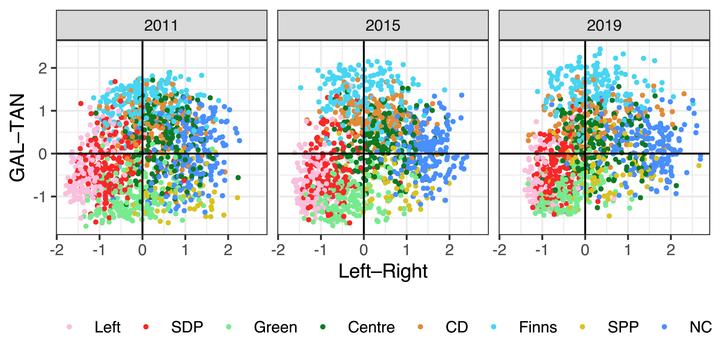Ideological mavericks or party herd? The effect of candidates’ ideological positions on intra-party success
 Candidates' ideological positions on Left–Right and GAL–TAN
Candidates' ideological positions on Left–Right and GAL–TANAbstract
Political candidates' ideological positions have been used to explain success in inter-party competition, but little is known about how they impact success in intra-party competition. Here, candidates' positions on the Left–Right and GAL–TAN dimensions are analysed in three Finnish parliamentary elections (2011, 2015, 2019). Candidates' ideological positions are measured in terms of their ideological distance from their own party’s median candidate. Absolute ideological distances between candidates and their party’s median candidate decrease candidates' preference votes. Furthermore, the effects are contingent on the general ideological position of the candidate’s party. However, these interactions do not follow any clear pattern, as more rightist candidates in right-wing parties and more green-alternative-libertarian candidates in traditional-authoritarian-nationalist parties all experience a decrease in their preference votes. This effect is large enough to be a decisive factor in intra-party competition between the last candidate that was elected and the first one that was not.